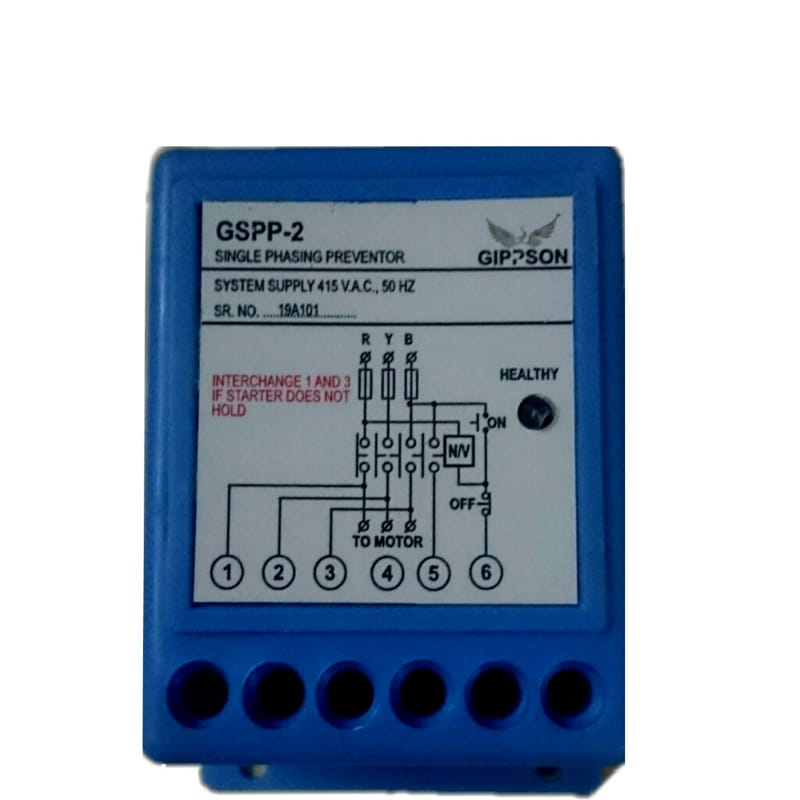SINGLE PHASE PREVENTOR

ABOUT SINGLE PHASE PREVENTOR
90% of total burn out of the motors are mainly due to overloading caused by unbalanced voltage conditions or phase failure. This fault remains undetected by conventional bimetallic overload relays and need a negative sequence component of voltage or current sensing single phasing preventer. They trip the motor starter if it goes beyond the set level of voltage or current. GIPPSON current and voltage sensing SPP offers protection up to motor terminals and does not allow motor to start under unfavourable supply conditions. The negative sequence current sensing is the best principle for single phasing protection. Technical Details Single Phasing: If any one phase is removed, the unit will trip the motor Voltage sensing SPP: It gives protection at sensing points only. It senses negative sequence component of voltage and protects the motor against phase failure, unbalanced supply and reverse phase sequence of voltage. Current sensing SPP: It gives protection up to motor terminals. It senses negative sequence component of current and protects motor against phase failure, reverse phase sequence and unbalanced supply of the current (> 50% of rated maximum current) Reverse phasing: When phase sequence is reversed, motor rotates in reverse direction. This condition is not desirable to run the motor, so the unit will trip the motor. Unbalanced supply current and voltage: Unit gives protection against unbalance voltage or current. If voltage unbalance is higher then 45+/- 5V, unit trips. If current in any tow phase differs by 50% (10 A) of rated maximum current (20 A in case of 8-20 A unit) it trips motor. Low/High voltage cut-off: It senses supply voltage and protects the motor against too high or too low voltage conditions. Overload: It senses average current going to motor and protects motor against overload (over current). Overload setting is to be set at 120% of the full load current. Dry run: When motor operates without load (i.e. water pump without water), the condition is considered as dry-run. Prod less dry-run setting is to be set depending upon no-load current of the motor else it may cause the miss tripping of the motor.


